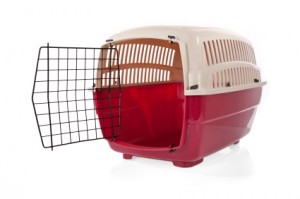A Special Report from Emergency Plan Guide

Members of the family!
Are your pets members of the family? Of course!
Then they deserve the same care s other family members when it comes to preparing for an emergency!
Putting together an emergency supplies kit for pets takes some effort and a modest amount of money. But the kit can save you and your pet from needless worry and concern in the case of a real emergency. Without a kit, you may be dooming your pet to abandonment and even death.
Here’s a simple three-step plan to assembling your Pet Emergency Supplies Kit.
Step One: On-going pet security
You probably have these basic safety precautions already in place.
* Proper identification – Be sure your pets are wearing collars and securely fastened identification. Include your phone number and alternate number. Have your pet micro-chipped at a reputable organization, so your pet will be part of a large database.
* Current photos – Lost pets may be turned in to local animal shelters; having a current color photo of you and your pet, along with contact information, may make it easier to reunite you with your pet. It may keep your pet from being handed over to a stranger, too! You have to have these photos BEFORE the pet goes missing!

Window Card
* Pet Window Card – Consider a “Pet Inside” window card or decal like the one shown. It alerts first responders or other emergency workers and provides contact numbers for alternate caregivers for your pet.
* Develop a Pet Buddy — Arrange with a neighbor to care for your pet or even evacuate with it if you aren’t at home.
Step Two: Preparations for “shelter in place”
Assuming you are home for an extended period of time, without power or water, etc., caring for your pet will require these supplies.
* Pet carrier — If you receive advance warning of an emergency, or notice strange pet behavior (Animals can often sense emergencies even before you do.), secure you pet in its crate or carrier. A piece of YOUR clothing, with YOUR scent, would be a welcome comfort item.
* Large blanket – A safe way to capture and transport an excited or frightened animal is to wrap it in a blanket in your arms. Have an extra large blanket for your cat, since cat scratches and bites can be infectious.
* Food and water – If you are building your own supplies of food and water, sufficient to last for at least a week and preferably two weeks, include your pet in your planning. Don’t forget 2 weeks’ worth of kitty litter, dog poop bags, etc.
* First aid kit for your pet – This could include bandage rolls, bandage tape and scissors; antibiotic ointment; flea and tick prevention aids; a pet first aid reference book. Put some grooming aids in, too.
* Medicines and medical records – Have appropriate supplies and records, including the name of your veterinarian, list of medicines (and medicine schedule), record of vaccinations, packed in a waterproof container and readily available.
Step Three: Preparations for evacuation
PLAN AHEAD TO BE ABLE TO TAKE YOUR PETS WITH YOU! Leaving them behind may doom them to abandonment, injury or even death. Realize, however, that in many cases your pets will not be able to stay with you and your family in a Red Cross shelter. Make arrangements beforehand for a safe place for them to stay.
 As for the kit, start with the items from Step Two, and add the following to a duffle bag, backpack or other easily-carried container:
As for the kit, start with the items from Step Two, and add the following to a duffle bag, backpack or other easily-carried container:
* Leashes and harnesses. Store them in the pet carrier so they are readily available. Include a muzzle for your dog – if necessary, use the gauze from your first aid kit. Own a cat? Have a pair of leather gloves to protect your hands and arms.
* Medical Records – Vet’s name and address, vaccination and medical records. Add information on feeding and medicine schedules for your pet.
* Pet Behavior — If your pet has particular fetishes (“Won’t eat next to other animals.”), make a list!
* Dishes – Have portable, non-spill water and food bowls to go along with canned and dry pet food. Don’t forget the portable can opener.
* Toys – Add a favorite toy or snack to your supplies.
* Clean-up supplies – Cage liners, cat pads, paper towels, plastic bags, etc.
Step Four: Where will you take your pet?
Assume Red Cross evacuation shelters will not be able to take your pet! Find out in advance where your pet could be housed in the event of an emergency; interview owners or managers regarding their facilities, costs, etc., and have contact information in your Pet Emergency Supplies Kit. Some options:
* Friends or relatives outside your area (if you could reach them).
* “Pet-friendly” hotels and motels.
* Boarding facilities including your veterinarian.
* A trusted pet sitter.
Completing the above items will make a big difference for you and your pet if an emergency threatens or happens. If you want further information, contact your local Humane Society, American Society for the Prevention of Animals (ASPCA), Federal Emergency Management Agency (FEMA), and local county or city agencies (“Animal Care Services”).
**************************************************************************************************

Joe Krueger and Virginia Nicols
Even if you are well-prepared, your chances of a safe survival are threatened if others around you are NOT prepared. Emergency Plan Guide helps organize teams in your neighborhood and workplace. Please share this report with friends, family and colleagues, and encourage them to subscribe for more reports like this one at: http://www.EmergencyPlanGuide.org
